Many consider the third-generation S-Class, the W140, to be the last “proper” Mercedes-Benz. Whether you believe that or not, it represented a pivotal moment for the brand. It arrived just a couple of years after Lexus shook up the luxury sector with its segment-redefining LS400, which delivered S-Class levels of comfort for E-Class pricing.
The W140’s stately looks cloak its fascinating history—a tale worth telling, even if the car itself remains just another old, used German luxury machine to the general public. I’m particularly inspired by this S600—the version with the V12—currently up for bidding on Hagerty as part of the 1,300-car Generous Collection. I’d like us to take a walk through time and, hey, if you’d like to buy it (it’s currently only bid to a dangerously low price) and let me drive it, that’s fine, too.
Like all good car stories, the W140’s history begins with a bit of controversy. Development began in the mid-1980s, with French designer Olivier Boulay and Italian designer Bruno Sacco tipped to pen the car’s looks. The third-gen S-Class was, originally, inspired by the painfully pretty second-generation Jaguar XJ.
By 1987, the development team had a low-slung design buck ready to present to the lead engineer. But that presentation went poorly. From Hagerty:
Chief engineer Wolfgang Peter and car line manager Rudolf Hornig had descended on the styling laboratory to try out the seat layout ergonomics in a mock-up of the new cockpit. Both men were of particularly Germanic dimensions, both at least 6 feet 3 inches tall. Both ended up banging their heads on the roof upon getting in.
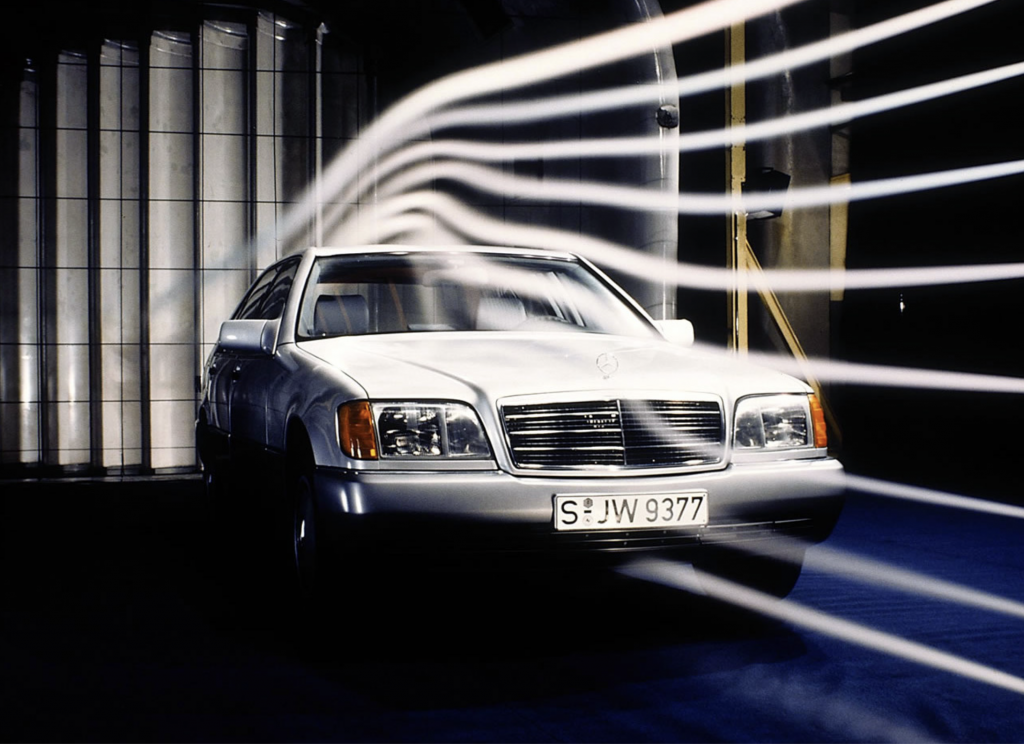
This two seconds of mild discomfort for two generously proportioned gentlemen would have deep, long-lasting repercussions for the entire company. The buck was fitted with a removable roof, so when the dull thud was heard a panicked team began to lift it off. As they lifted it off, the two voices said in unison, “That’s great now!”
A further two centimetres would be added in height, despite howls of protest from the design team, who believed the car looked a bit like a top hat. Mercedes-Benz boss Werner Niefer sided with the engineers, and soon Sacco’s sporty vision would be forgotten.
No one liked that top hat look, which also reportedly ruined the car’s handling characteristics. So more width was added to compensate, thus adding more weight. Engineers then allegedly spent 18 months trying to develop a “perimeter frame” for the car to compensate for the added poundage, described by Hagerty as a setup that would have the body be “mounted by a separate suspension system to the chassis.” But engineers couldn’t get it done, so they used a more traditional unibody with front and rear subframes.
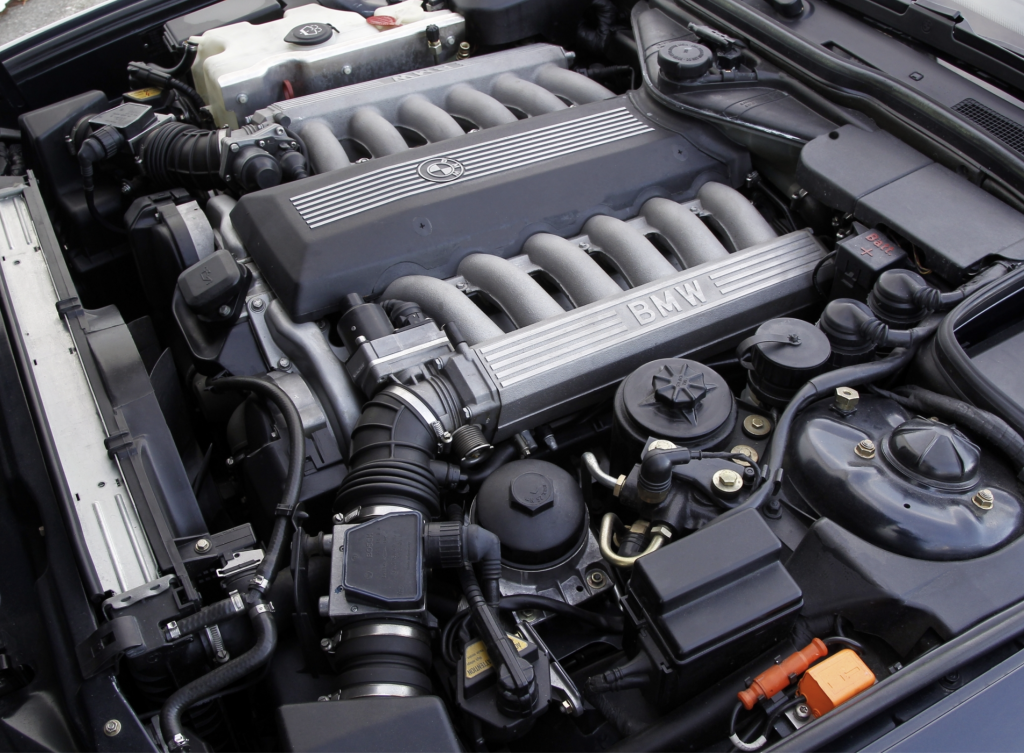
The W140 was on track for a launch between 1989 and 1990—around the same time Lexus would launch the LS—but then the BMW 7 Series happened. In 1987, Mercedes’ biggest competitor revealed it would be putting a V12 in its E32-generation 7 Series sedan, earning its status as the first post-war German car to receive a 12-cylinder powertrain. By this time, the V12-powered XJ had been on sale for nearly two decades. Mercedes wasn’t about to get one-upped again. From Autoevolution:
These competitors forced Mercedes to delay the W140 by roughly 18 months to redesign the engine compartment and to develop a V12 engine to properly compete with the XJ40 and E32.
The delay and cost overruns resulted in the departure of Mercedes-Benz chief engineer Wolfgang Peter, which is understandable because the shift from an engineering-centric touch to market-centric hogwash is unfavorable in this context. Mercedes-Benz was also exploring a W18 and a V16, further explaining Peter’s frustration with the W140 project. Only the V16 soldiered on past the blueprint stage, and only a handful of prototypes were fitted with that gargantuan engine that never went into series production.
Already in too deep (to the tune of over $1 billion) to cut costs to better match the Lexus, Mercedes launched the W140 at the Geneva Motor Show in 1991. Depending on trim, it was up to 40% more expensive than the car it replaced—but it had every reason to be, with stuff like dual-zone climate control, soft-close doors, double-pane windows, and a power-assistance trunk shutting mechanism.
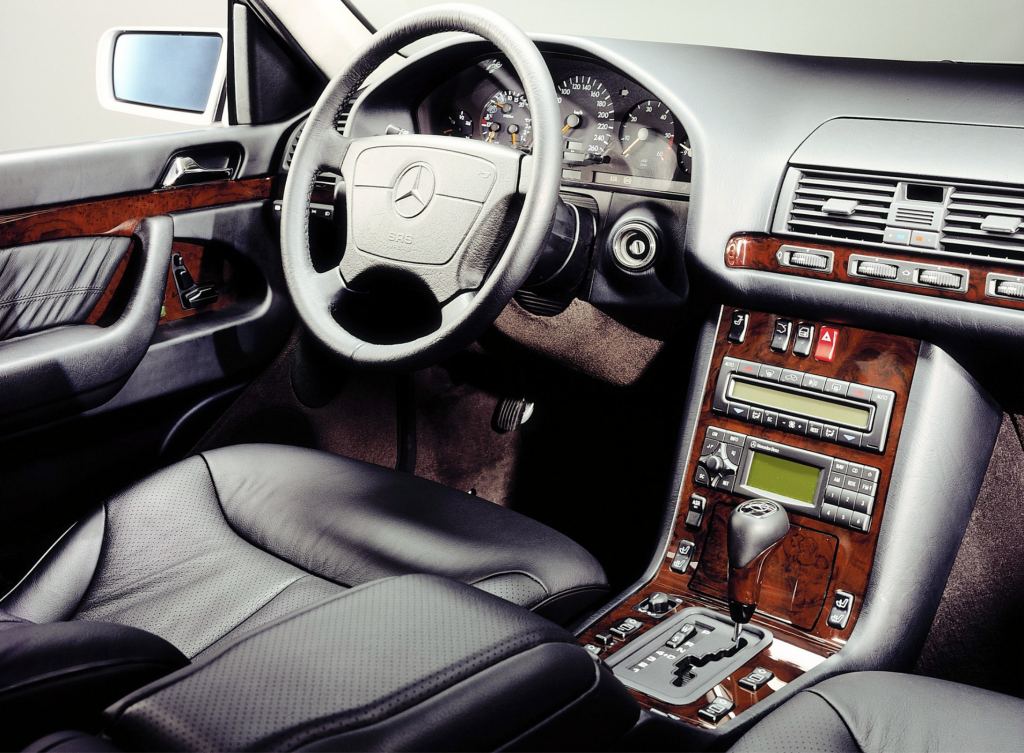
The overly opulent, thirsty S-Class came at a time when the public wasn’t exactly keen for such a vehicle, with environmentalists making strides in the political space. Oh, and there was also a pretty sizable economic recession happening at the time. From Hagerty:
At the time, the German Green Party had made big gains in parliament, and eco-friendliness was a big part of the political agenda. While Volkswagen was displaying how much of its new Golf could be recycled, Greenpeace welcomed the S-Class with a mammoth pile of fuel barrels to demonstrate how much it would imbibe over its life cycle.

Even if you weren’t feeling particularly green, the overtly conspicuous consumption associated with a new S-Class wasn’t particularly favourable; a worldwide recession had hammered luxury car sales. At the time, Ferrari Testarossas were available for a 10–15 per cent discount as unsold cars clogged up around Maranello. The introduction of the two-door version of the Mercedes, the SEC/CL, a year later did little to improve matters, largely down to its similarly awkward looks.
Whether you consider the W140 S-Class a success or not will depend on who you ask. Mercedes sold 432,732 units worldwide over the course of the car’s lifecycle, according to Autoevolution. It introduced a ton of new tech to the passenger car world, like speed-sensitive steering, electronic stability control, heated wiper fluid, and rain-sensing wipers. And it was among the very last Mercedes-Benz models to be built without much regard for cost. If not successful, it’s certainly worth remembering.
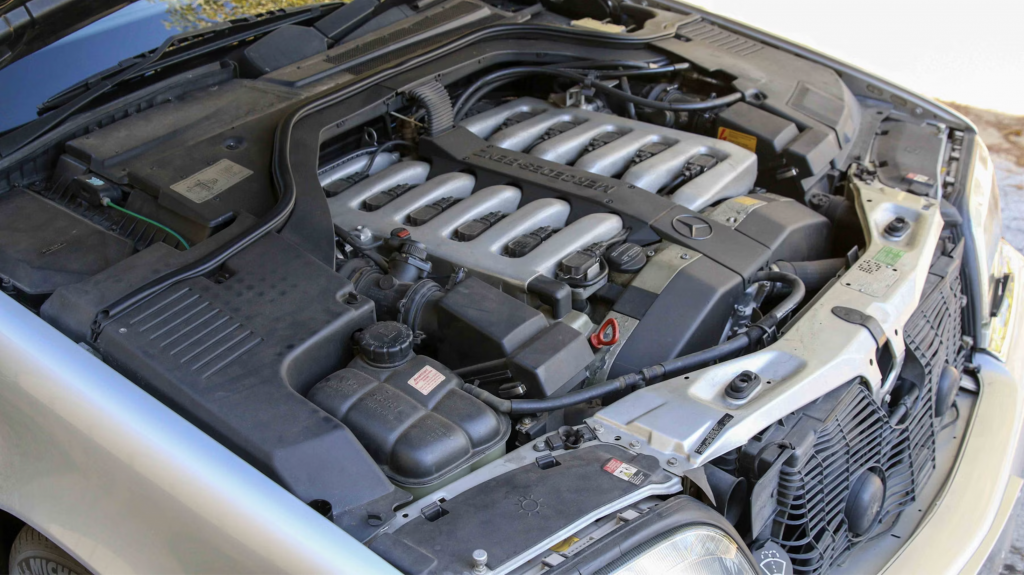
I’m fond of the W140 because of that V12, the M120. Despite its short 18-month development cycle, this engine has managed to become of of the most legendary blocks to come out of Germany, powering not only the S-Class, but a handful of funky concept cars, including the Isdera Commendatore 112i and the Lotec Sirius. Derivatives of this engine also ended up in cars like the CLK GTR and the Pagani Zonda.
This one, being sold by Hagerty, is an S600, which means it has the M120 under the hood. It piqued my interest not only because of the engine, but because these cars are now incredibly cheap for what they are. While these W140s didn’t really make sense to buy new, they represent a fantastic value for enthusiasts who can appreciate them now. And if you’re the type who loves the sound of a V12, they make an ungodly howl when equipped with the right aftermarket exhaust:
If that doesn’t make the neurons in your brain fire, I’m not sure we can be friends.
Let’s say, for some reason, the S600 isn’t your speed. The Generous Collection has literally hundreds of other cars to choose from. If you’d rather have a smaller, more parkable Mercedes, there’s a 190—another one of the company’s legendarily stately sedans—also up for grabs, which should go for much cheaper. Sticking with the German theme, I’m also keeping an eye on this ’64 Porsche 356SC coupe, one of the prettiest cars of the whole lot.
Of course, if you’re not the type to own a German car, the Generous Collection is stacked with classic muscle, as Mercedes pointed out. My personal favorite (right now, anyway) is this 289-powered ’67 Ford Mustang coupe. If I had the cash, I’d pick this car up, manual-swap it, and call it a day. There really is something for absolutely everyone in this auction.
[Ed Note: Hagerty Marketplace reached out to see if we’d be interested in partnering on a couple of posts to support this collection. Of course, we said that we’d love to. Look at these great cars! FYI: If you click on the links above to view this collection and, especially, if you register to bid, they’ll know you came via The Autopian. – MH]
Top graphic credit: Hagerty






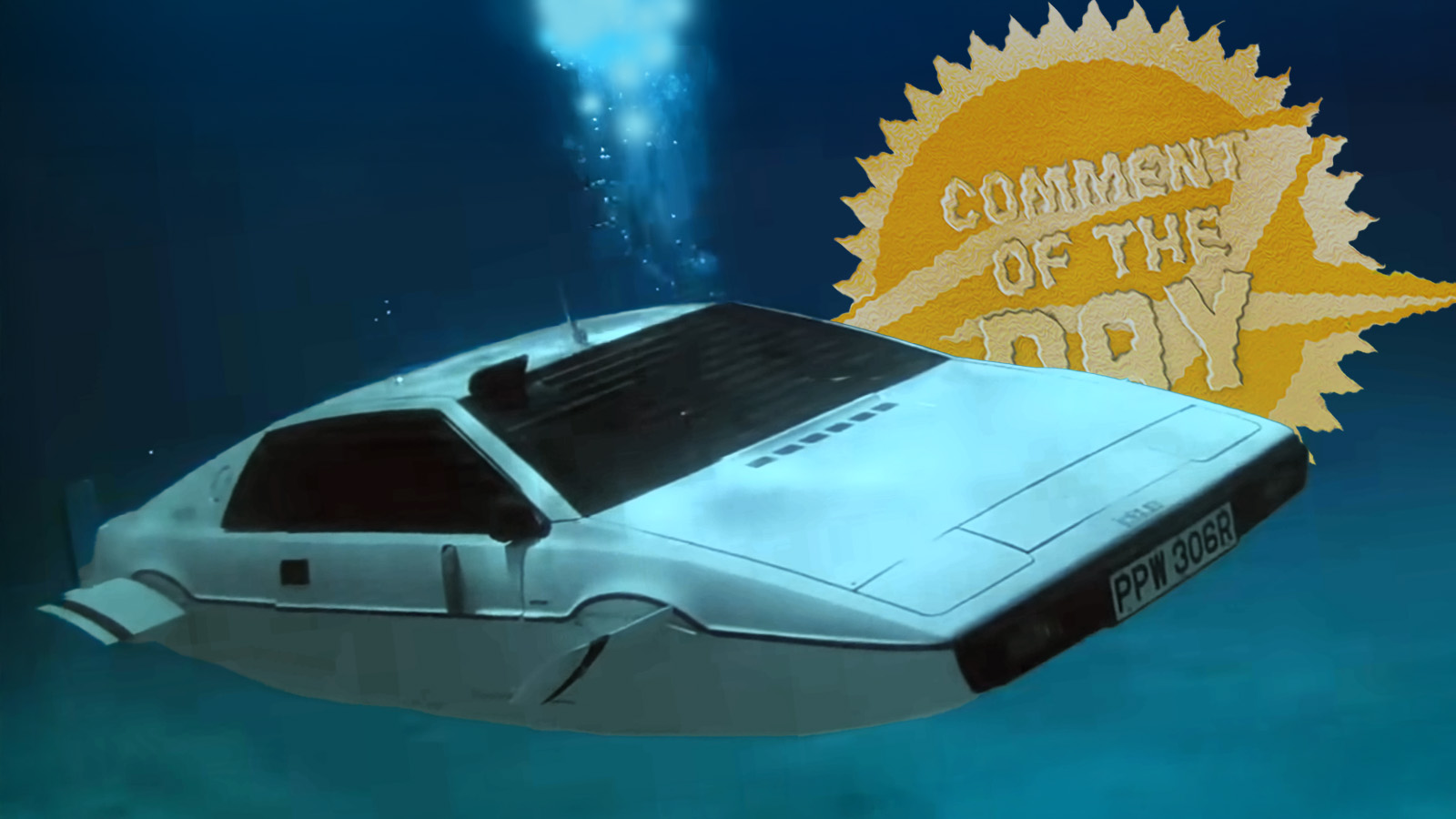


Over the past 5 years, my partner and I have developed a taste for old Benzes and have had 4 W126s and 3 W140s and they’ve all been wonderful. The W126s are much simpler and thus easier to live with, our 1988 560SEL with 52K miles has been remarkably trouble free with a seized AC clutch as the only the problem. The 3 W140s include a 1995 S420, 1996 S320 and a 1997 S320 shortie are a world apart in terms of driving dynamics and overall comfort compared to a W126 along with the equivalent Lexus LS, they’re remarkably comfortable yet can hustle when pressed. The funny thing is while they were considered complex for the standards of the time, they are actually quite straightforward compared to anything modern and are pretty easy to DIY. The hardware such as random bolts and screws are such great quality. The major components are quite robust including all the engines and transmissions we got in the US. The interior quality is also remarkable. Would not hesitate to have another one.
We picked up a W140 S420 for about $13K back in the mid 2000s. It was a dark metallic with 20″ chrome rims on it, very “baller” at the time. It had 120K miles on it. It was definitely not my style, but my husband really wanted it. That thing was a tank. The only thing that we really had to fix on it were one of the window regulators failed and the HVAC system had a resistor pack go bad, causing the airflow in the car to just be a trickle of air.
We had it for a couple of years, and then moved on to other interests. It is one of the cars that I do miss having, which surprises me.
Not soon after we sold it, the transmission started to have problems. 🙁
This was an interesting read and thanks for it Brian, but even though (I assume) Mercedes had long since switched from vacuum to electricity to operate the door locks and windows, etc… by ’98, I’d still be deathly afraid of owning something like this.
I’ve owned one new Benz (also a ’98 coincidentally, but a CLK, which isn’t really comparable to an S Class) and it was mostly a horror show of warning lights, error messages, and heartache. Add to that experience the one Audi and handful of VWs I’ve owned (ranging from mid-’80s to 00) having cost me dearly over the years in terms of time and money, and my appetite for vintage automobilia from the Fatherland is sated.
These were the last rolling bank vaults.
Mercedes-Benz had two chances to offer the first German post-war V12 engine. The engineers proposed the 7.4-litre V12 for the Großer Mercedes along with 6.3-litre V8. The board of directors deemed V12 too supererogatory and chose V8.
In 1982, the board of directors was presented with another V12 proposal for the W126 Series II to be introduced in 1985. The engine bay of W126 could accomodate the V12 engine without extensive modifications.They did the nave-gazing and decided “nope”.
Mercedes-Benz reportedly built 85 W140 prototypes with 8-litre V16 engine for testing. They were quite tight fit and necessiated the chassis extension between front axle and firewall. Nobody knows what happened to those engines to this day. W18 never went past the drawing stage.
The chief engineers for W140 development were promptly given the pink slip and shown the door.
When I lived in Colorado in the early aughts, I had a chance to buy a 1995 S 600 for $15,000. The deal breaker was inoperable HVAC system. I learnt that it would cost about $10,000 to fix it as it required disassembling the dashboard and centre console (adding lot of labour hours). So, no dice.
I remember the double glazing as a reason for extra loud horns on a motorcycle to ensure the bloated plutocrat in the Mercedes put down the phone. My old BMW had twin Fiamm horns to scare the inattentive.
I thought the styling on these was even heavier than the W126 “body by Mosler” and they were less reliable, although not as bad as the W202. My heart is with the older S class, since we had a W108 as a kid, and the W114 is the Ronin car, even if a 450SEL is the only attainable one
I remember the W140 as being deeply disappointing, styling-wise. The styling consisted mostly of there being very much car in every direction. It hasn’t aged as badly as it might have, because “big slabs of body panels” has become a staple of mainstream styling. But the W126 looks positively gracious beside the W140.
The W140 is hideous, but the W210 takes the cake IMO. Blech.
The W126 was the last proper MB for me, and the only Sacco design worthy of MB compared to older generations. A few SLs since have tickled my fancy, but other than those I doubt I’ll ever own another MB. This one is neat in principle, but I fear it’s hideous to own in practice.
The all aluminum Audi S8 is The car to have from Ronin.
Although I am also rather fond of the baddies Citroen XM’s as well, as the XMs were the really last of the wonderfully unique French super weird luxuary hydronumatic suspension offering from Citroen as the C6 that followed seemed a bit too watered down
The CL600 Coupe the one to have, if your wallet can bear it.
I don’t know if it needed a V12 as they had some decently potent V8s and even I-6s back then.
But this clip is probably my favorite one featuring a W140. W123s and W124s were more my style, but they were all out of reach financially for me back when they were being made.
The Peacemaker – George Clooney & Nicole Kidman Car Chase Movie Clip – S500 W140
And all those Ws were handsome cars, IMHO. Now, they are so ugly.
I have to disagree with you on the point the Mercedes was worth 40% more based on irrelevant features no one ever wanted.
? Who doesn’t want heated wiper fluid?? Our poor windscreens, outdoors in all weathers, deserve a little pampering.
Old Mercs had coolant hoses running to the washer tank cap, with a little horseshoe pipe that dipped into the bug juice and kept it toasty. Genius!
Genius until that “little horseshoe pipe” (more like a coil in my W124) develops a pinhole leak, and fills your washer reservoir full of coolant. AMHIK.
Well, yeah, that would be bad. The ones I saw were on ’60s and ’70s die-smells that had wealthy Barrington owners and were well-maintained by Motor Jerks.
mid 90’s our german distributer drove me from Munich to Stuttgart in one of these with v12. he drove in left hand lane with left directional on and floored it whenever traffic permitted. impressed by how much grunt it had >150kph. it had a hard-wired car-phone, which i found equally impressive.
HOw long was the phone cord to reach the wall?
HA! in hindsight, that was awkwardly phrased.
2G not widely adopted at the time, handset mounted between front seats, with radio & power supply in trunk – cutting edge technology.
we visited Alcatel in Stuttgart who were building cellular infrastructure…trying to persuade them to purchase our switches that could survive surface-
mount IR reflow and aqueous wash.
that S600 was a beast.
Built to a standard, not a price point.
This was also about the time that Lexus perfected their big sedan, which cost like half as much with better reliability (and maybe better gas mileage) and just as much luxury – it must have been tough to be trying to sell these Mercedes S-classes.
The LS 400 was pretty impressive in its day. Other than the fuel economy now, I wouldn’t mine one.
Probably, however I suspect Mercedes drivers who could afford to shop for this model wouldn’t have been caught dead in a fancy Toyota. I doubt there was much cross shopping, though I could be wrong.
If I had the garage space and need to drive, I’d own one of each.
Yeah, my father was/is hardcore Merc fan of the old school. And there was no chance Lexus and Mercedes could even be mentioned in same sentence. Even in yearly ’00s when they first started selling them in my shores. Even these days when Merc quality has gone down the drain, there is only one with 3 pointed star.
Personally biggest hindrance for Lexus in europe is lack of wagon. Crossovers are clearly aimed at US market with tiny trunks and sedans do not sell here. Wagons still do, and I cannot remember when I last saw fe Mercedes sedan. Tons of wagons tough. AWD Lexus ES or GS plugin hybrid wagon would eat the germans cake.
What I can tell you is that at the time the CEO/Head-Investor for one of my clients, who could afford anything, moved from a Mercedes to the Lexus in this timeframe. The Lexus had cache with a portion of the high-net-worth set that liked the treatment they received at the dealers and the looks/quality of the car. I am in New England, where the old money doesn’t like to stand out – I once told an investor friend that I knew he came from money because only an old New England Blue Blood would wear a blazer with holes worn into the elbows everyday to the office/lunch.
Someone I worked with / my boss bought one of these in the late 1990s – I think the car was 4 years old and he purchased the car for about $35K for a car with an original MSRP approaching $100K (hell it could have been more than $100K). We did some long day trips in this beast and it fit four 6 footers with ease and ate up the highway miles like butter. Overall, however, I was not that impressed and got an E39 5-series that I liked more.
I’ve always wanted a big, S-class Benz. But have not wanted the big service bills associated with them. It really was the end of an era. After that, the focus shifted to SUVs and now we mostly have blobs on wheels everywhere. I do wonder what it would be like on a nice long road trip though. Smooth and quiet is my guess.
LOL these cars are awful in terms of reliability.
Too bad Lexus never used the Century’s V12 on any LS.
When the W140 was introduced, D-B PR and the motoring press told us that the new S-Class was intended to compete with the Rolls-Royce Silver Spirit/Spur for interior luxury, stateliness and interior accommodations.
In that regard, it did not disappoint.
But when loyal W126 owners came in to swap out their old S-Classes for new in the mid-90’s – and saw now large the W140 was as well as how spacious the new W210 E-Class had become – with interior space which was greater than their old SWB W126, power that was also on par with or better than what they were accustomed to, plus most of the modern amenities they wanted – many of those former S-Class owners became E-Class owners.
Yeah but the motoring was undone by their ignorance always thinking der Deusch were perfectly cromulent and could not make a mistake and were the standard despite being less than the Asian auto manufacturers